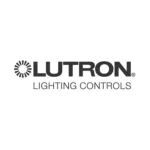If your heating system still relies on an old-school timer, you might be paying more than you need to. Smart thermostats are often marketed as energy-saving devices, but some homeowners question whether they actually consume more electricity themselves. It’s a fair concern. After all, anything “smart” usually means more features, more connectivity, and potentially more power use.
But here’s the twist: smart thermostats don’t just sit there sipping electricity. They’re actively working to make your home heating more efficient. By adapting to your routine, using built-in sensors, and offering remote control, they help you avoid heating empty rooms or running the boiler when it’s not needed.
That said, they do draw a small amount of electricity to power those features, so the real question is whether their energy savings outweigh their consumption. The answer isn’t a simple yes or no—it depends on your home, your habits, and how well the thermostat is set up. This article lays out everything you need to know, from actual electricity usage to cost savings and UK standards.
How Smart Thermostats Work
What Makes a Thermostat “Smart”?
A smart thermostat goes beyond the traditional dial or digital control. It connects to your Wi-Fi and often comes with a mobile app, allowing you to adjust your heating from anywhere. Many models also use motion sensors and weather data to make smarter decisions about when to turn on the heating.
Over time, some thermostats learn your schedule automatically, adjusting temperatures without needing constant input. This reduces the chance of forgetting to turn the heating off, one of the biggest culprits of energy waste.
Typical Features and Their Impact on Energy Use
Smart thermostats come loaded with tech: colour screens, app connectivity, and even voice control with Alexa or Google Assistant. These features run continuously, but they’re designed to be efficient. The processor inside a typical smart thermostat is low-powered, more like a phone in standby mode than a laptop running at full tilt.
Electricity Consumption: Smart vs Traditional Thermostats
Baseline Power Use
Most smart thermostats draw a very small amount of electricity, usually around 1 watt or less on standby. That’s about 8.76 kWh per year, costing under £2 annually based on average UK energy prices. Compare that with a traditional mechanical thermostat, which draws no electricity at all from your mains—it’s purely manual.
So yes, in isolation, a smart thermostat uses more electricity. But this direct power use is negligible compared to what it controls: your entire heating system, which consumes vastly more energy.
Connected Features That Use Energy
The largest draw tends to come from the wireless modules—your thermostat is constantly maintaining a connection to your router. Add to that a digital screen, touch interface, and sometimes microphone support, and it sounds like a lot. But even with all this, power usage remains minimal.
For example, Nest and Hive thermostats use around 0.5–1.2 watts in regular operation. Most devices meet or exceed European Union Ecodesign energy efficiency guidelines, which currently limit standby power for network-connected home electronics to around 2 watts.
The Trade-Off: Increased Device Usage vs Household Energy Savings
Behavioural Adaptation
Here’s where smart thermostats shine. They reduce wasted energy by adjusting your heating to your routine. If you leave the house at 8 am every weekday, it learns to switch off shortly after. If you come home later on weekends, it adjusts accordingly.
This behavioural efficiency means your boiler runs only when needed. That alone can offset the electricity use of the thermostat many times over.
Measured Results from Studies and Case Examples
The Energy Saving Trust reports potential savings of up to £75 a year by using a smart thermostat effectively, assuming you’re on a standard heating schedule. Similarly, Ofgem encourages smart heating solutions as part of the UK’s broader carbon reduction goals.
Depending on your current setup and usage, the heating energy you save could range from 10–20%, which far exceeds the tiny bump in electricity usage from the device itself.

Cost Implications Over Time
Installation and Operational Costs
Initial purchase and professional installation can range from £150 to £300. But operational costs are almost nil, outside of the small amount of electricity mentioned earlier. No batteries to replace, no subscription needed for basic features.
More advanced integrations—like multi-zone heating or connection to underfloor systems—may require additional hardware or services.
Maintenance and Updates
Smart thermostats are typically updated automatically via Wi-Fi. These updates improve efficiency, add features, and fix bugs—all without your input. It’s one of the advantages of buying a reputable brand that supports its products over time.
Smart Thermostats and UK Energy Regulations
Compliance and Efficiency Standards
Smart thermostats sold in the UK must comply with Part L of the Building Regulations, which sets standards for energy efficiency in homes. They also meet the Boiler Plus requirements, which mandate time and temperature controls for all new combi boiler installations.
Additionally, the EU’s Smart Readiness Indicator (adopted by the UK) rates buildings based on their digital energy management capabilities, encouraging more homes to adopt smart controls.
Integration With Smart Home and Renewable Systems
Many smart thermostats are now designed to integrate with wider smart home ecosystems, including lighting, sensors, and renewable systems like solar panels or heat pumps. That integration allows for more holistic energy management, especially useful in modern energy-efficient homes.
Explore our complete range of smart home services for more ways to connect and control your home.
Is a Smart Thermostat Right for Your Home?
Factors to Consider
Not all homes are equal when it comes to heating. Poor insulation or outdated radiators might limit the benefits of a smart thermostat. Likewise, if your daily schedule varies wildly, automated patterns may not be much help without manual tweaks.
If your home is modern or well-insulated and you have a fairly predictable routine, a smart thermostat can offer noticeable savings and comfort improvements.
Professional Advice for Homeowners
If you’re unsure what suits your home, our guide to smart thermostat installation offers step-by-step help, tailored for Cornwall properties and UK systems.
FAQs
Do smart thermostats always save money?
No, the actual savings depend on how efficiently the system is set up and used. If you often override settings or leave the heating on manually, you might not see much benefit.
Can I install a smart thermostat myself?
Some models allow DIY installation, but professional fitting is recommended to ensure it integrates properly with your existing heating system and complies with UK wiring standards.
What happens if the Wi-Fi goes out?
Most smart thermostats still function locally and will continue to heat your home based on the last known settings. You just lose remote access until the connection is restored.
Conclusion
Smart thermostats do use a small amount of electricity—but they more than make up for it in what they save. By learning your routine, cutting waste, and offering precision control, they help households lower their heating bills without compromising comfort.
It’s not just about the gadget on the wall—it’s about the potential for smarter, more responsible energy use. And when used correctly, smart thermostats support that goal beautifully.
If you’re considering making the switch or want help optimising your system, reach out via our contact page for expert guidance from Wave Electrical Solutions.










